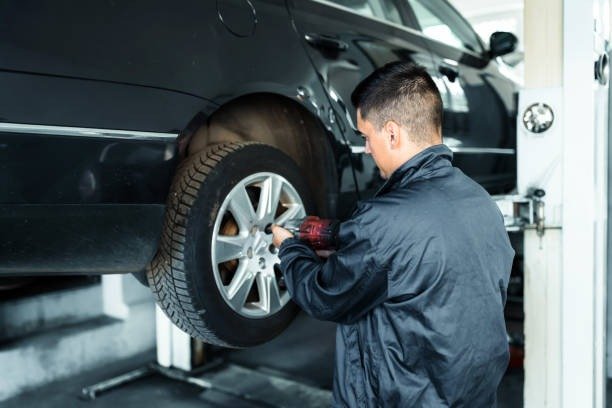How Often Should You Replace Your Vehicle Tyres?

Tyres don’t last forever. And while there’s no one-size-fits-all answer, knowing when to replace your tyres can save you from unexpected breakdowns—and more importantly, keep you safe on the road.
Whether you’re a daily commuter or a weekend cruiser, tyre condition directly affects everything from handling to braking distance. So how often should you actually replace them? Let’s break it down in simple terms.
What Affects Tyre Lifespan?
Before we get to the timelines, it’s important to understand what factors influence how long your tyres last. These include:
Driving habits: Hard braking, quick acceleration, and sharp cornering can speed up wear.
Road conditions: Rough roads, potholes, and extreme weather take a toll on tyres.
Tyre quality: High-quality tyres like Continental tyre models are built to last longer under tough conditions.
Maintenance: Poor alignment, over- or under-inflation, and missed rotations all shorten lifespan.
General Rule of Thumb: Every 5 to 6 Years
Most tyre experts recommend replacing tyres every 5 to 6 years, even if the tread looks okay. Rubber compounds degrade with time, especially in hot climates like the UAE. Even if you don’t drive often, ageing tyres can crack, harden, or lose grip.
And if your tyres are more than 10 years old, they should be replaced immediately—regardless of condition. At that age, they’re simply no longer safe.
Tread Depth: Your Visual Cue
Tread depth is one of the easiest ways to know if your tyres need replacing. In the UAE, the legal minimum tread depth is 1.6 mm, but most experts suggest replacing them once they hit 3 mm for optimal safety.
Here’s how to check it:
Use a tread depth gauge (cheap and easy to find).
Or try the coin test—insert a dirham coin into the tread. If the outer rim is visible, it’s time to shop for new tyres.
Tyres like the Continental tyre range often come with wear indicators—small bars in the grooves that become visible when the tread is too low.
Signs It’s Time for New Tyres
Apart from age and tread depth, watch for these warning signs:
Cracks or bulges on the sidewall
Vibration or shaking at certain speeds
Uneven wear (which may indicate an alignment issue)
Increased braking distance or reduced grip—especially in wet conditions
If you notice any of these symptoms, don’t wait for a breakdown to take action.
Do You Rotate Your Tyres Regularly?
Tyre rotation helps distribute wear more evenly, which can extend tyre life by thousands of kilometers. If you haven’t been rotating your tyres every 8,000–10,000 km, they may wear out faster than expected.
Pairing good driving habits with a reliable set of tyres—like those in the Continental tyre lineup—can make a significant difference in both performance and lifespan.
What Makes Continental Tyre a Smart Choice?
When it’s time to replace your tyres, quality matters. Continental tyre is known for innovation, durability, and road safety. Built for all types of driving—from city traffic to long highway journeys—they’re engineered to deliver a quiet ride, strong grip, and lasting tread life.
In hot-weather regions like the UAE, Continental’s heat-resistant rubber compounds and precise tread design make them a solid option for both performance and safety.
Final Thoughts
So how often should you replace your vehicle tyres? Every 5–6 years is a good benchmark, but tread wear, age, and visible damage are even more important indicators. Keeping a close eye on your tyres—and choosing high-quality options like Continental tyre—will keep you safer on the road and may even save you money in the long run.
